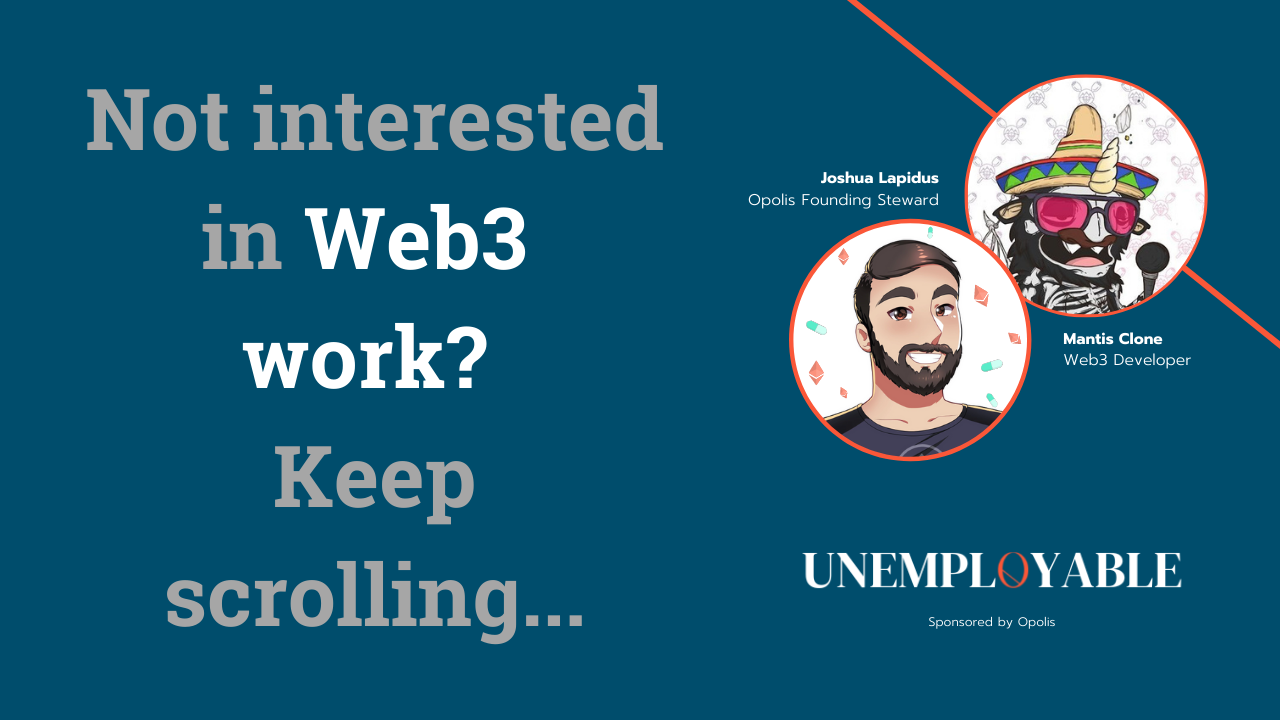How to Find Work in Web3
If you’re leaning toward a career in disruptive technology, Web3 promises endless opportunities, especially in the web development arena. With an outlook of reaching that $6 trillion mark in 2023, the Web3 industry is on an upward trajectory.
Mantis Clone, a solopreneur Web3 developer, offers some tips and tricks on how to find work in Web3, whether you’re a complete newbie or a seasoned developer. For Mantis, it’s about discovering what works for you. He says, “Figuring out what is right for you is a deeply personal sort of choice.”
How to Get Started as a Web Developer
When you’re starting out as a web developer, there are a few steps that will make the journey a bit smoother.
Step 1: Find a solid gig
It’s important to find a bread-and-butter gig that allows you the freedom to pursue opportunities in Web3. The aim is to start slow before dipping your toes in Web3. A solid gig or “day job” provides that safety net as you learn a whole new career.
Step 2: Join a community
Communities offer a wealth of information and opportunities for new developers, such as training, competitions, and friendship. These communities often have job boards and notices of events.
Step 3: Do online tutorials
A great way to sharpen your skills and learn new developments in the web developer sphere is to sign up for online tutorials. Look out for the latest courses on offer to get exposed to the latest technology.
Step 4: Do bounties
A bounty can be described as a competition. However, that’s a very loose description. Bounties vary in their competitiveness, and the less competitive, the easier it is for your submission or solution to be accepted. Some bounties require a proposal before you can enter, and some bounties are calls for funding. These are great ways to get your name out there and make some cash on the side.
How to Land That First Web Development Gig
Forums and bounties are great places to land your first web dev gig. A potential client will post their problem, and you will present your solution. The client would award you the bounty or funding, and that’s considered a gig. When you’re ready to pitch, you’ll want to include the following information:
- The problem you see
- The solution you envisage
- What it will take to get the project done
- If there’s a team involved, who does what
Another way for newbies to enter the field is by creating their own event, such as a hackathon, where you use existing technologies to solve problems. If you do this well enough, it can become a full-blown, earnable project.
Pros and Cons of In-House vs. Freelance
In-house work can offer stability and routine, plus great salaries and benefits. The projects become known, and you’re able to predict how the day will flow. However, it can become mundane, lack flexibility, and there is a potential ceiling to your earnings.
As a freelancer, there’s the opportunity to work with different clients on a variety of projects, plus the flexibility of setting your own hours. You can also constantly work at growing your income, but there’s a caveat. There aren’t any employee benefits, and you might find yourself overwhelmed by the sheer volume of projects. It can also take some time to build up a decent client base.
You can listen to the full episode on finding work in Web3 on Opolis.co/Podcast or explore how Opolis can support your transition to freelancing with employment benefits for indie workers at Opolis.co.



